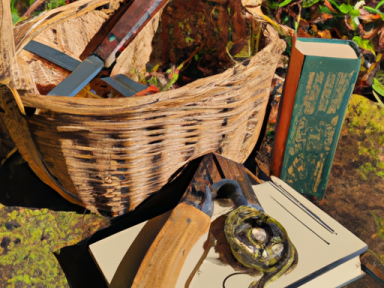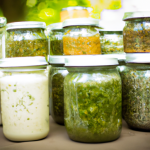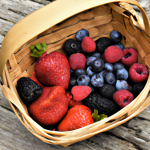
Foraging Tools: Essential Equipment for Successful and Safe Foraging
When it comes to foraging for food in the wild, having the right tools can mean the difference between a successful harvest and a missed opportunity. Foraging is a skill that has been practiced by humans for centuries, and it has become increasingly important in today’s uncertain times to be self-sufficient and able to provide for ourselves and our families. Whether you are a seasoned forager or just starting out, having a set of essential tools will significantly improve your chances of success and keep you safe in the process. Let’s take a look at some must-have foraging tools.
1. Field Guide
A good field guide is an invaluable resource for any forager. Look for one that is specific to your region and includes detailed descriptions and photographs of the plants, fungi, or other edibles you may encounter. It should also include information on their habitats, seasons, and any potential look-alikes or poisonous species. Having a reliable field guide will help you identify edible plants with confidence and avoid dangerous mistakes.
2. Knife
A sturdy knife is an essential tool for any outdoor enthusiast, and foraging is no exception. Look for a knife with a fixed blade, as it is more durable and versatile than a folding knife. A sharp and reliable blade will help you easily harvest plant leaves, stems, and roots, as well as safely prepare your finds for consumption. Remember to handle your knife with caution and always follow proper safety protocols.
3. Gathering Bag or Basket
When foraging, you need a reliable container to carry your harvest. A gathering bag or basket with a strap or handle will make it easier to collect and transport your finds without damaging them. Look for a bag with a sturdy construction and enough space to accommodate a variety of plant materials. Avoid using plastic bags, as they can cause plants to sweat and decompose faster.
4. Gloves
Protecting your hands while foraging is crucial. Gloves not only shield you from thorns, prickly plants, and rough terrain, but they also minimize the risk of coming into contact with potentially harmful plants or irritants. Choose gloves that are durable, flexible, and provide a good grip, allowing you to handle plants with precision without compromising your safety.
5. Digging Tools
Foraging often involves harvesting plants with edible roots, tubers, or bulbs. Having a small digging tool, such as a hand trowel or a hori hori knife, will make it easier to extract these underground treasures. Look for tools that are lightweight, sturdy, and easy to handle. Remember to dig responsibly and avoid disturbing the surrounding ecosystem more than necessary.
6. Water Bottle and Snacks
Foraging can be physically demanding, so it is essential to stay hydrated and fueled throughout your outing. Carry a water bottle filled with clean water and pack some lightweight, nutrient-rich snacks to keep your energy levels up. Nuts, dried fruits, and energy bars are all excellent choices that provide a quick boost when needed.
7. First Aid Kit
Accidents can happen even in the most controlled environments, so it is crucial to be prepared for any mishaps while foraging. Carry a basic first aid kit that includes items such as bandages, antiseptic wipes, tweezers, and any necessary medication. It is also a good idea to familiarize yourself with basic first aid procedures for common injuries you may encounter in the field.
With these essential foraging tools in your kit, you’ll be well-prepared to venture into the wild and gather nutritious and delicious edibles. Remember, foraging is a skill that requires practice, knowledge, and respect for the environment. Always harvest responsibly, leave no trace, and continue to educate yourself on the plants and mushrooms in your area to ensure a safe and successful foraging experience.



GIPHY App Key not set. Please check settings